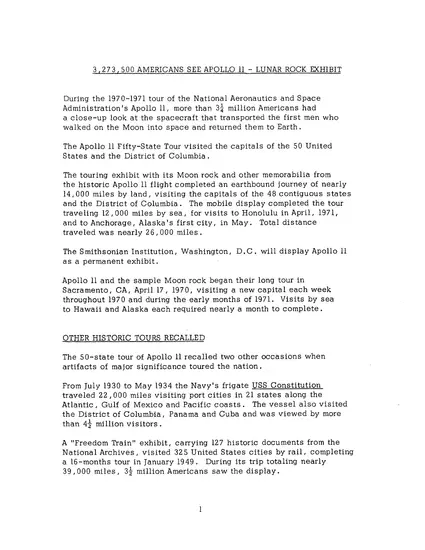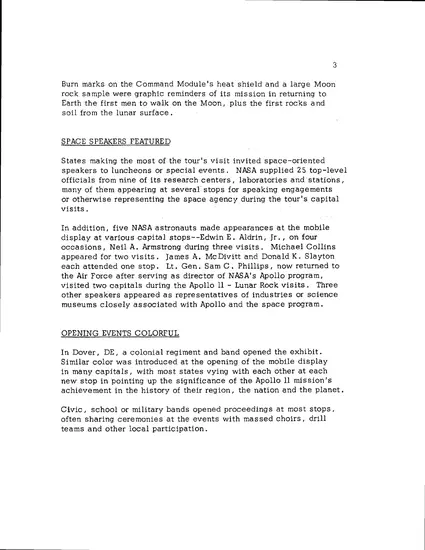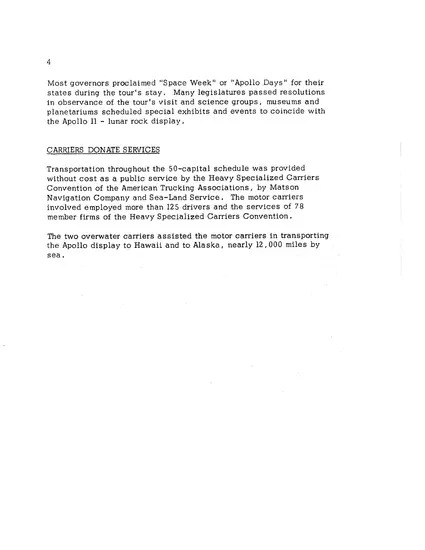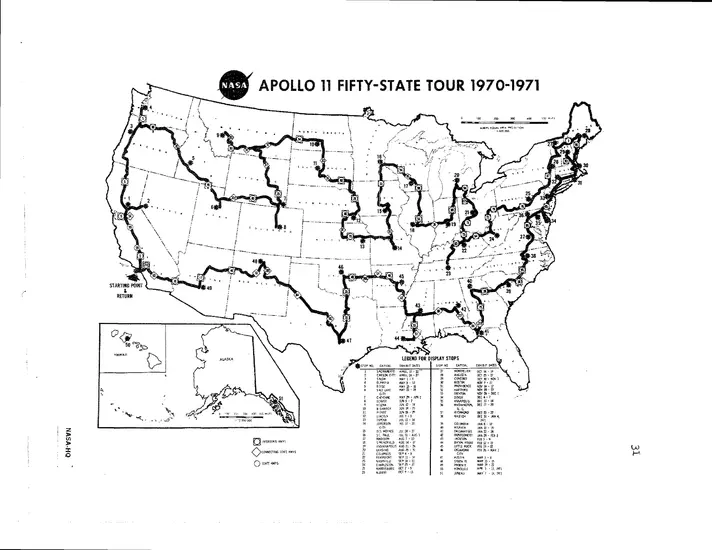
The Last Time the Command Module Columbia Toured
Feb 25, 2017
This week, we announced that the Apollo 11 Command Module Columbia, the original spacecraft that carried the first astronauts to walk on the Moon, and more than 20 additional flown artifacts from the Apollo 11 mission, will go on a national tour to four major American cities: Houston, Saint Louis, Pittsburgh, and Seattle. The tour coincides with the 50th anniversary of Apollo 11 in July of 1969. While this will mark the first time the spacecraft has left the Smithsonian since it was added to the collection in 1971, it is not the first time the Command Module Columbia toured the United States.
The Command Module Columbia is among the most prized and popular artifacts in the Smithsonian’s National Air and Space Museum collection. It was launched atop a Saturn V rocket on July 16, 1969 carrying astronauts Neil Armstrong, Buzz Aldrin, and Michael Collins on the first lunar landing mission. The spacecraft was their home as they traveled to the Moon and back. On July 24, 1969, it reentered Earth’s atmosphere and splashed down in the Pacific Ocean to bring all three astronauts safely home.
Before it was entrusted to the Smithsonian for preservation and public display, Columbia went on another, now largely forgotten, journey. The National Aeronautics and Space Administration (NASA) organized and executed an ambitious public tour of a Moon rock, Neil Armstrong’s lunar extravehicular activity (EVA) spacesuit, several small items that had returned from the mission, and the Command Module Columbia. Stopping at 49 state capitals, the District of Columbia, and Anchorage Alaska, the tour provided Americans with a unique opportunity to view and marvel at these historic items. When the tour was over, in 1971, Columbia was relocated to Washington, DC. It has been cared for and displayed by the Smithsonian Institution ever since, until now.
As you prepare to see Columbia in one of the four stops of the tour, relive its first journey across the US here with pages from NASA’s 1971 report for the “Fifty-State National Tour” along with images from that period.
Are you planning to visit Columbia when it goes on tour this October?
Related Topics
You may also like
Related Objects

We rely on the generous support of donors, sponsors, members, and other benefactors to share the history and impact of aviation and spaceflight, educate the public, and inspire future generations. With your help, we can continue to preserve and safeguard the world’s most comprehensive collection of artifacts representing the great achievements of flight and space exploration.
Support the Museum
We rely on the generous support of donors, sponsors, members, and other benefactors to share the history and impact of aviation and spaceflight, educate the public, and inspire future generations. With your help, we can continue to preserve and safeguard the world’s most comprehensive collection of artifacts representing the great achievements of flight and space exploration.




























